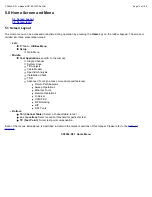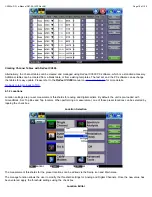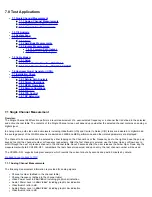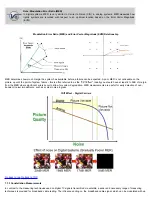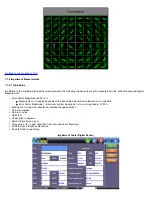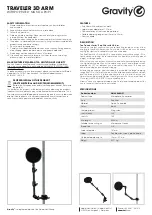
The diagram is an X/Y plot of the I (In-phase) and Q (Quadrature) axis components of the QAM signal and is particularly useful for
viewing impairments due to ingress and/or modulation problems present on the digital signal.
A symbol (essentially a waveform representing one or more bits) should ideally appear as a compact or clean dot in the center of
each symbol box. Decision boundaries exist within the constellation so that if the symbol falls within the boundary, the correct data
is received.
If due to noise or other interference, the symbol falls outside the boundary, the data is in error. Error detection and correction (e.g.
FEC) will attempt to the correct these errors, thus avoiding video impairments.
Observing the symbol's shape and location relative to their ideal positions allows you to draw some conclusions about the nature of
an impairment
Understanding the Constellation Diagram
The following impairments can be assessed visually:
Gain compression
- Pulls the symbol clusters into the center while the middle ones are unaffected. Gain compression can result
from poor or bad amplifiers, IF equalizers and up/down converters.
Gain Compression
Broadband or system noise
- Causes symbol clusters to enlarge, which increases the probability of errors. An error occurs when
the dot is pulled across a decision boundary.
Summary of Contents for VEPAL CX350S-D3.1
Page 1: ...CX350s D3 1 e Manual D07 00 102P RevA01 Page 1 of 109 ...
Page 13: ...Go back to top Go back to TOC CX350s D3 1 e Manual D07 00 102P RevA01 Page 13 of 109 ...
Page 16: ...Go back to top Go back to TOC CX350s D3 1 e Manual D07 00 102P RevA01 Page 16 of 109 ...
Page 21: ...Go back to top Go back to TOC CX350s D3 1 e Manual D07 00 102P RevA01 Page 21 of 109 ...
Page 57: ...Go back to top Go back to TOC 7 8 4 Remote Operations ...
Page 76: ...Go back to top Go back to TOC CX350s D3 1 e Manual D07 00 102P RevA01 Page 71 of 109 ...


